The practical driving test will involve you taking one of the possible four manoeuvres. Occasionally, time permitting, the examiner may even request two manoeuvres.
You will not know which manoeuvres the driving examiner will request, so you need to learn them all. This section covers in-depth tutorials for all four manoeuvres designed and written by experienced and qualified driving instructors.
The tutorials have every aspect of the manoeuvre covered, including appropriate observations and reference points. It will take time to learn them until proficient, but if followed correctly, you will pass that section of the driving test.
Driving manoeuvre tutorials
The manoeuvre tutorials are written by highly experienced and fully qualified driving instructors. If the tutorials are followed precisely, it will lead to a pass within this section of the driving test. Learner drivers should start manoeuvres at the earliest point in their driver training that they are capable of doing so.
By doing this, manoeuvres should be fluent by the time they reach test standard. A driving test can easily be failed on a manoeuvre. Plenty of practice is required ensuring you are slow, accurate with plenty of observation in order to pass the driving test.
Best cars for manoeuvres
Using a small car although not essential, may prove beneficial whilst attempting a manoeuvre. Using a car that enables you to easily and clearly see all around 360 degrees should also prove beneficial as cyclists and pedestrians are easily spotted. A car that utilises engine management may allow you to move slowly by using the clutch only without the need for the accelerator. This can prove beneficial as it allows you stop quickly as you can place your right foot over the brake and not the accelerator.
Manoeuvre tutorials
The four possible manoeuvres are pulling up on the right, forward parking into a bay, reverse parking into a bay and parallel parking. Straight reverse, hitting the kerb and road camber are additional guides to help. Reverse around a corner and turn in the road are no longer conducted on the driving test. However, we have decided to leave them as they are often useful in real life and some instructors continue to teach them.
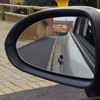 Straight reverse
Straight reverse
The straight line reverse is the first manoeuvre to be learnt as it helps learner drivers starting off with a key understanding of the driving test manoeuvres listed below. Once the straight line reverse is mastered, the other four manoeuvres become much easier.
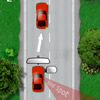 Pulling up on the Right
Pulling up on the Right
Pulling up on the right is a new driving test manoeuvre and one that many driving instructors have begun teaching. The exercise is potentially hazardous due to parking against the flow of traffic. This tutorial explains the manoeuvre and what the test candidate needs to do in order to succeed. Also covered are the potential complications with pulling up on the right and pulling up on the right reference points.
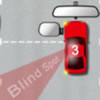 Forward Bay Parking
Forward Bay Parking
One of the new manoeuvres introduced into the driving test is the forward bay park. This tutorial covers forward bay parking in depth, specifically detailing key hazardous areas and what you should be done. Also covered are reference points which are used to help learners complete the manoeuvre.
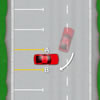 Bay parking
Bay parking
The reversing into a bay manoeuvre that many struggle with, this bay parking tutorial offer an easy technique to follow with diagrams. This manoeuvre is often failed on the driving test due to a lack of knowing all the facts. This tutorial explains all. Bay parking reference points tutorial offers additional help for establishing reference points in this driving manoeuvre.
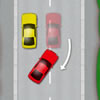 Parallel parking / Reverse parking
Parallel parking / Reverse parking
Commonly known as the most difficult manoeuvre, the parallel parking or reverse parking manoeuvre tutorial as it’s also known, features a complete guide with helpful diagrams. Providing this manoeuvre is taken slowly, with plenty of observation, reverse parallel parking is easy if using all the reference points used. See also the parallel parking reference points guide and once you have read through the tutorials, take a look at the parallel parking quiz test.
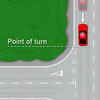 Reverse around a corner
Reverse around a corner
Tutorial for reverse round a corner manoeuvre complete with diagrams and reference points. The reverse round a corner manoeuvre is no longer requested on a driving test, but it’s still a useful exercise to learn for when you’ve passed the driving test.
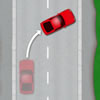 Turn in the road
Turn in the road
In-depth tutorial for the turn in the road, previously known as the 3 point turn manoeuvre. No longer requested by driving examiners, but due to this manoeuvre being carried out frequently by full licence holders, it’s a useful exercise to learn. After you have studied the turn in the road tutorial, have a go at the turn in the road knowledge test quiz.
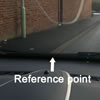 Hit the kerb
Hit the kerb
Learner drivers are often prone to hitting the kerb in driving lessons, on manoeuvres and quite often during a driving test. This tutorial offers reference points to help avoid hitting the kerb and advice during a driving test if you should hit the kerb either during a manoeuvre, whilst parking or whilst driving.
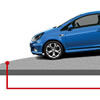 Road camber
Road camber
Road cambers combined with the lack of a learner drivers ability to sufficiently control the car cause many driving test failures each year. Explained is what a road camber is, plus the different types of road camber.

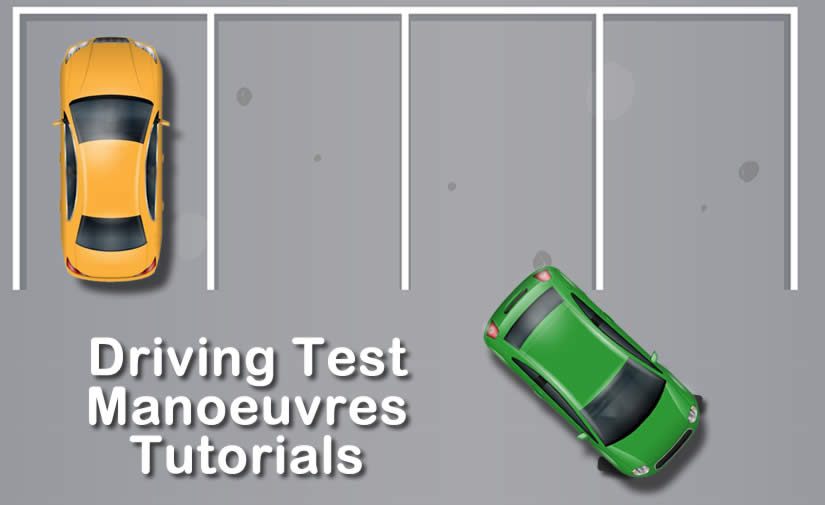
Hi , I believe it is only one manoeuvre to perform in the driving test, not possibly two
Usually yes, but I have seen on the odd occasion where two have been done.
do you fail if you hit the kerb whilst doing a manoeuvre such as the reverse around a corner?
Hello John,
There’s no definite yes or no on this – it depends on a couple of things. The severity in which you hit the kerb; there’s a slight scrape, versus banging right into it or even mounting the pavement. Then there’s the examiner – some examiners are a little more lenient if you correct a bad situation and put it right, whilst others may see it as an immediate fail.
Always carry out manoeuvres very slowly so that you not only can observe everything around you, but have full control so that you can correct yourself. Ultimately, if you mess up a driving test manoeuvre, ask if you have time to try it again. It works out on occasions.
park in a bay – either driving in and reversing out, or reversing in and driving out (the examiner will tell you which you have to .. bit harsh when there saying one of 3 manoverus when actually it’s 2 for reverse in and then out .. or is it just one of them
One of the three manoeuvres as in; bay parking, parallel parking and pulling up on the right.
This article has me thoroughly confused – you say you could be tested on one (or two) in four manoeuvres, but you’ve listed seven manoeuvres? Are all of these fair game?
Hi Leo,
Just updated. If you read under the heading ‘Manoeuvre Tutorials’, it should make things clear.
In reply to Trippylizard.
Hi,
I understand now what you have mentioned right in the beginning,”. Start learning manoeuvres as early in the training as possible “!
I’m coming up to my test in 6 weeks, still have trouble with reverse Bay parking (from accuracy in reference points to reversing in the correct direction-left/right).
Currently under tier 4 so can’t have ADI lessons, yet instructor been saying, “don’t worry about manoeuvres “! Isn’t that unrealistic ??
Hi
I understand “Now” what you have mentioned right in the beginning of the topic,”. Start learning manoeuvres as early in the training as possible “!
I’m coming up to my test in 6 weeks, still have trouble with reverse Bay parking (from accuracy in reference points to reversing in the correct direction-left/right).
Currently under tier 4 so can’t have ADI lessons, yet instructor been saying, “don’t worry about manoeuvres “! Isn’t that unrealistic ??
Not sure why your instructor is saying don’t worry about manoeuvres. If you can’t do them, you’ll fail. What I would say about manoeuvres, always break them down into stages rather than doing them in one go. So for reverse bay park, reverse back to your first reference point, then stop. Start reversing back as you steer to next reference point, then stop. So make lots of stops to keep checking where you are and keep very very slow. Lowering the door mirrors will help you see markings (don’t forget to adjust again when finished). Open the window, stick your head out to see where you are. Pull for ward to make adjustments if you need to. That is all fine. Just remember all-round observation and make sure to look in the direction of travel (out the back window) BEFORE going back.
Is it a fail if you don’t look directly through the rear window but do use all 3 mirrors? I feel that keeping both hands on the steering wheel is safer and easier than trying to turn your head to look behind you! If you are observing as you pull up to reverse you should be aware of all hazards! Or are you allowed to take one hand off the steering wheel when reversing to make it easier to look behind you?
Hi Andy,
Yes, you can take one hand off of the steering wheel while turning to look behind when reversing. Before moving the car in any direction, you first must be looking in that direction, whether that’s forward or backwards. When reversing, move the car very slowly so that it allows you time to not only control the car, but to look around in all directions, including in all three mirrors.